
I had the opportunity to participate the SQL Server conference event (SQL KONFERENZ 2024) with my collegue Nathan Courtine.
Independent from each other we chose exactly the same sessions as we are both interested in topics like Security, Performance Tuning, Azure and Artificial Intelligence (AI).
For me, it was a great pleasure to see all those guys – from which I read books, read blogs and hung around within many video-sessions late at night – now live on stage! Those are great people from the SQL Server community. Some of them I’ve listed here in alphabetic order:
- Bob Ward
- Daniel Hutmacher
- Enrico van der Laar
- Erland Sommarskog
- Grant Fritchey
- Hugo Kornelis
- Joey D’Antoni
They were really great, especially Bob Ward (as he is a fantastic entertainer with an enormous presence on stage). Bob Ward was talking about AI-Support within Azure and GitHub and showed the capabilities of “Copilot” when we are working with Azure SQL Database. “Copilot” is actually in preview and available for free. Microsoft begs for feedback from customer so that they can continue to train and improve the product – see the blog from Nathan Courtine as he went into details in this topic dbi Blog (dbi-services.com)
“Copilot” is now part of the azure portal:

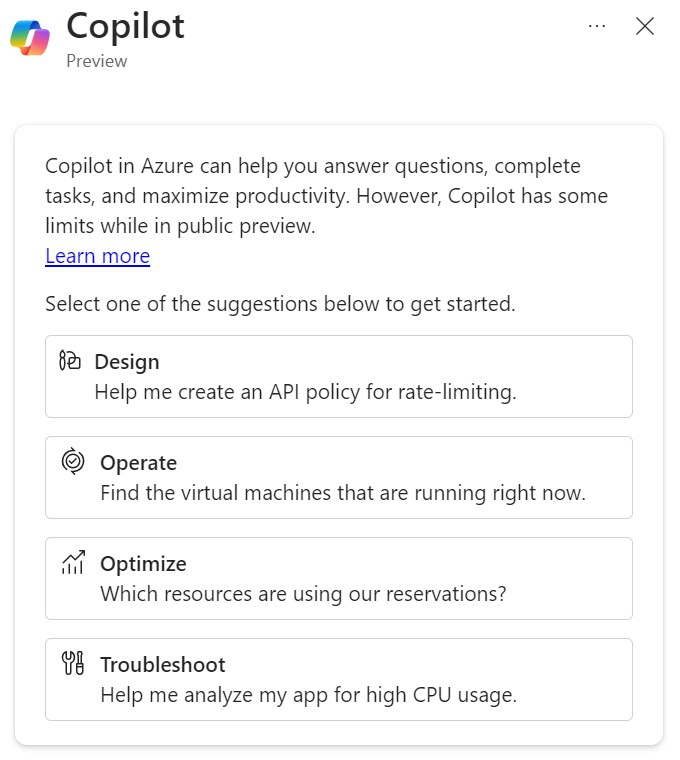
Here the small communication box which provides big output – the portal to another dimension:

I will definitely look into this tool (can we still speak of a tool here at all…?) to see how well AI works in this context and what it’s possible to reach with it.
Daniel Hutmacher talked about an old, yet highly topical subject in SQL Server – A C I D. He walked through the different isolation levels and showed the behaviour of concurrent transactions and the influence of each one of them.
Well known stuff, smart guy, great session!
Enrico van der Laar has written one of the greatest books from my point of view: SQL Server 2012 Wait Statistics (now available also for 2022 of course). This book inspired me back in the early days to do SQL Server Performance Tuning with Wait Stats. I don’t use this as my only tool, but I do use Wait Stats as one of many arrows I have in my quiver.
I was afraid that Enrico van der Laar a) did a session with another guy together about “Crazy Data Science” and b) just in this time slot a session from Matt Gordon took place, in which he talked about the migration steps and concerns to move data von OnPrem to the cloud.
I chose the session from Matt Gorden because – as an Azure Solution Architect – I’m also very interested in topics around the cloud.
Matt Gorden did a great job. He pointed out that in cloud migration projects (as he has already accompanied many projects of this kind) communication between all involved teams and proper testing are the main success factors.
Grant Fritchey had – for whatever reasons – only a 20 minutes session in which he explained the keypoints for a successful database devops circle.
Short, hairy (he’s wearing an increadable beard), great as always!
Hugo Kornelis did a session about reading the execution plan.
Maybe you tend to say: “Ok, reading an execution plan is no rocket science Roger, wright? As a DBA and SQL Server consultant you should be able to get light on its feet into it…”
Yes, that’s true, but Hugo Kornelis pointed out some pitfalls when we are interpreting those patchwork of JOIN-Operators, Warnings, Seeks and Scans, Table Spools, Stream Aggregates and so on and so forth… which are misleading you to wrong assumptions.
For example, the costs relative to the batch, which shows – even we are dealing with the actual execution plan – only the estimates:
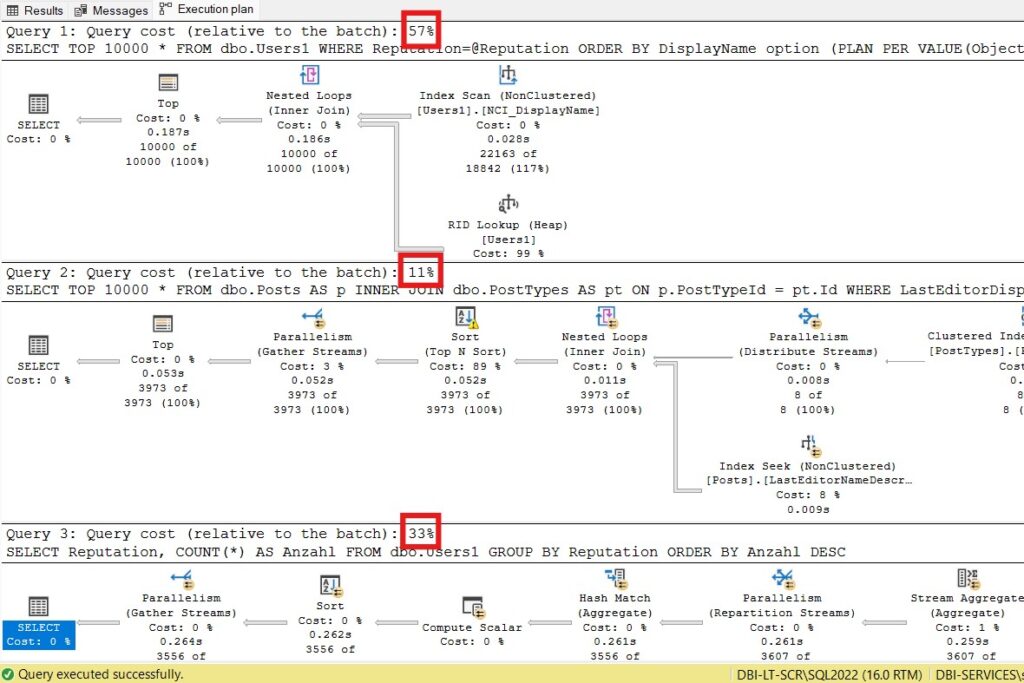
Joey D’Antoni took us with him on a cloud journey. He spoke about the security concept in Azure.
Conditional Access, PIM, Access Reviews, Management Groups, Managed Identities, IAM, RBAC, Contributor etc. – he guided us through all these topics with some explanations.
However, it was only a high flight altitude without comments and experience reports. From my point of view a great pity, I would have expected more from such an experienced man…
But beyond this, there was a guy I didn’t no so far. His name is Mladen Prajdic. He is an MVP from Slovenia.
His session at this conference was not directly related to SQL Server – he spoke about Social Engineering and how to hack people – but was extremely exciting.
As I mentioned, I’m interested in Security as well and looking at this topic on a completely different level was very pleasant for me. He pointed out, that every human being is vulnerable and under given circumstances open in a way, that he or she is willing to share personal information.
Mladen Pjajdic explained, that when you are sitting in a bar, and after a while a beautiful woman sits down next to you and starts flirting with you (if you are a man and admire beautiful women like I do) this would be in most of the cases a social attack to figure out who you are and collect information about you to do further nasty things. So hmmm, maybe I was hacked a week ago while I thought she really wanted something from me… well, life is not always sunny 😊
Erland Sommarskog (as he is a wandering encyclopaedia of flesh and blood when it comes to topics like SQL Server Collation) had an amazing, impressive speech about a topic which is well known, but somehow very opaque and confusing for many people.
He mentioned, what kind of collation and codepages produces what kind of side effects in what circumstances. In his home country Sweden for example, a “V” is the same as a “W” – is this also the case in other countries…? Of course not! So this can lead to unexpected SORT or JOIN results if you are dealing with the wrong Collation. Furthermore he pointed out, that there can be Collation conflicts when you are joining TempTables and Usertables if Server- and Database Collations are not inline, which then has to be fixed within the code as an unnecessary extra workload. Below, you’ll find a little example of it.
First of all, let’s check the Server Collation:
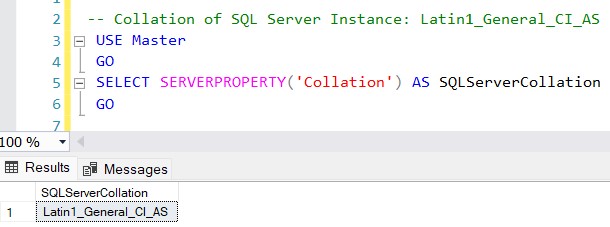
Then we will create a database with a different Collation than the Server has, create a table and fill in some date:
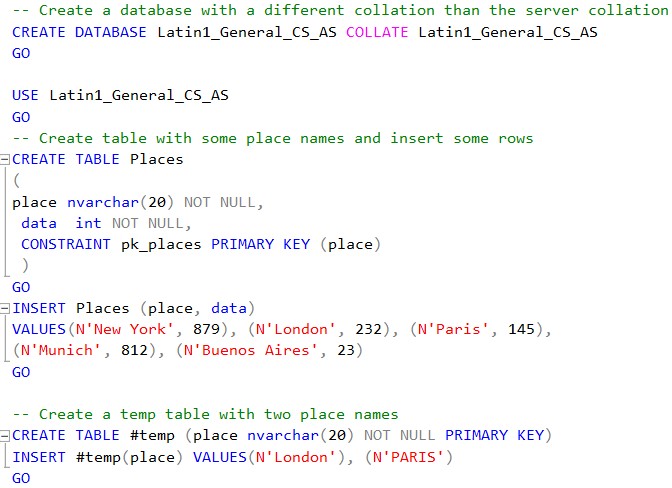
If we try to JOIN now the Usertable “Place” with the TempTable “Place” we will get the mentioned Collation conflict:

To resolve this conflict, we have to do this code change at the TempTable side using COLLATE:
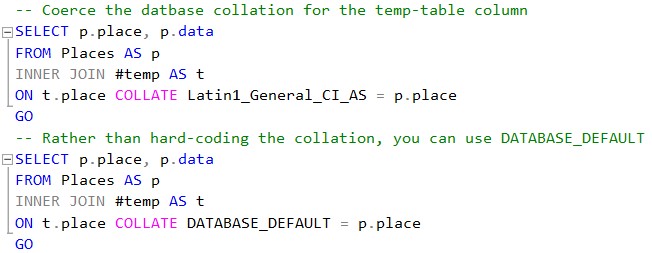
From this conference I take with me several ideas and tips to increase the knowledge in SQL Server to be able to better support my customers during consulting and topics to dive into deeper new technologies as well as topics around cloud and AI.
Thanks to dbi-services to let me follow these type of event!
![Thumbnail [60x60]](https://www.dbi-services.com/blog/wp-content/uploads/2023/09/SGR_web-2.jpg)
![Thumbnail [90x90]](https://www.dbi-services.com/blog/wp-content/uploads/2025/11/LTO_WEB.jpg)
![Thumbnail [90x90]](https://www.dbi-services.com/blog/wp-content/uploads/2022/11/TBR-web-min-scaled.jpg)